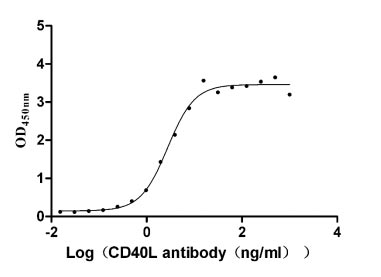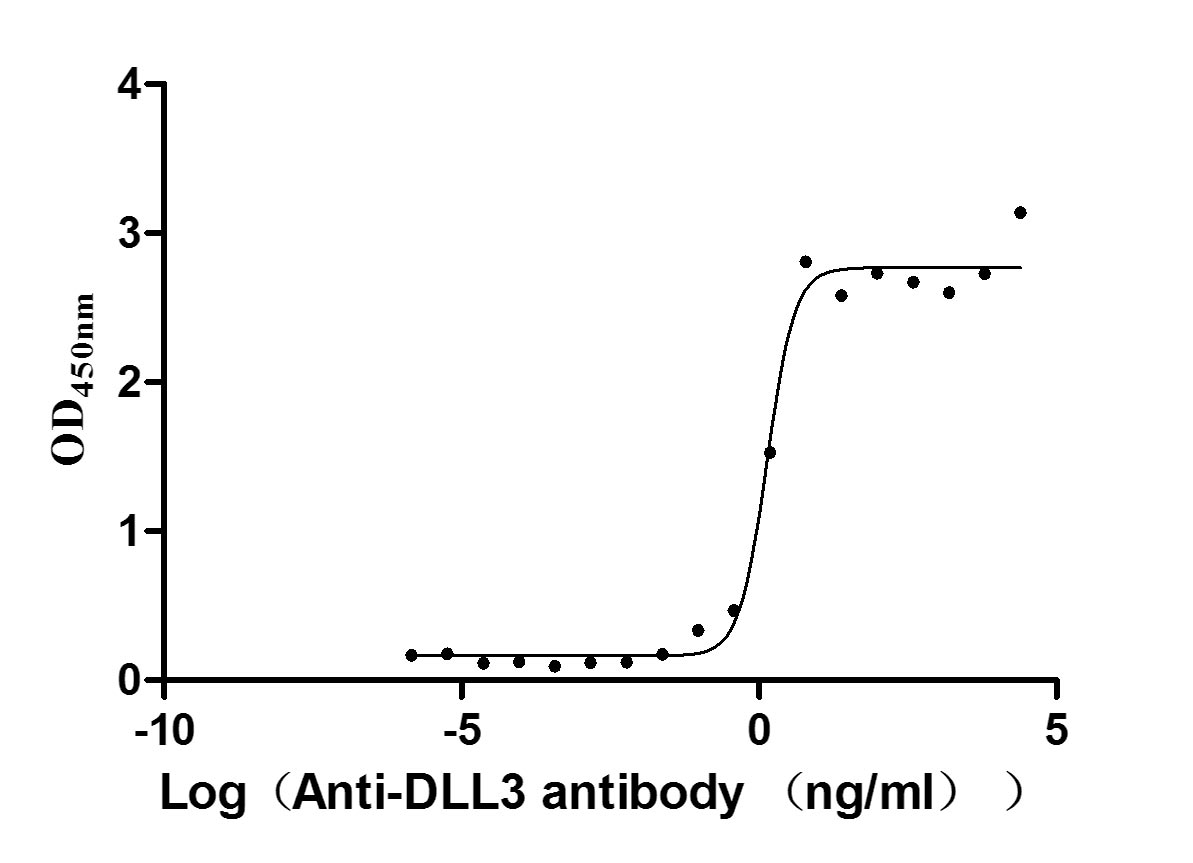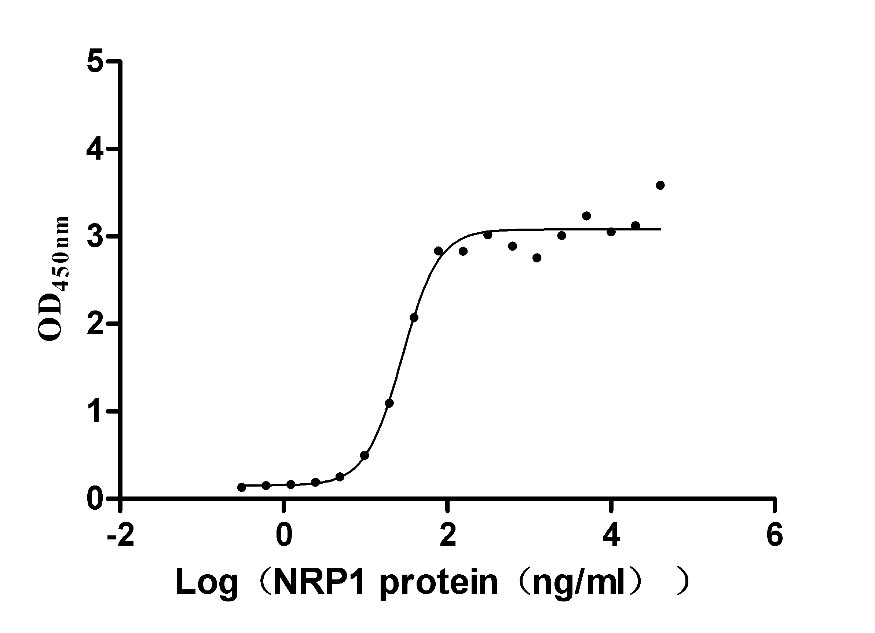Recombinant Mouse Potassium voltage-gated channel subfamily KQT member 4 (Kcnq4), partial
-
中文名称:小鼠Kcnq4重组蛋白
-
货号:CSB-YP884939MO1
-
规格:
-
来源:Yeast
-
其他:
-
中文名称:小鼠Kcnq4重组蛋白
-
货号:CSB-EP884939MO1
-
规格:
-
来源:E.coli
-
其他:
-
中文名称:小鼠Kcnq4重组蛋白
-
货号:CSB-EP884939MO1-B
-
规格:
-
来源:E.coli
-
共轭:Avi-tag Biotinylated
E. coli biotin ligase (BirA) is highly specific in covalently attaching biotin to the 15 amino acid AviTag peptide. This recombinant protein was biotinylated in vivo by AviTag-BirA technology, which method is BriA catalyzes amide linkage between the biotin and the specific lysine of the AviTag.
-
其他:
-
中文名称:小鼠Kcnq4重组蛋白
-
货号:CSB-BP884939MO1
-
规格:
-
来源:Baculovirus
-
其他:
-
中文名称:小鼠Kcnq4重组蛋白
-
货号:CSB-MP884939MO1
-
规格:
-
来源:Mammalian cell
-
其他:
产品详情
-
纯度:>85% (SDS-PAGE)
-
基因名:Kcnq4
-
Uniprot No.:
-
别名:Kcnq4; Potassium voltage-gated channel subfamily KQT member 4; KQT-like 4; Potassium channel subunit alpha KvLQT4; Voltage-gated potassium channel subunit Kv7.4
-
种属:Mus musculus (Mouse)
-
蛋白长度:Partial
-
蛋白标签:Tag type will be determined during the manufacturing process.
The tag type will be determined during production process. If you have specified tag type, please tell us and we will develop the specified tag preferentially. -
产品提供形式:Lyophilized powder
Note: We will preferentially ship the format that we have in stock, however, if you have any special requirement for the format, please remark your requirement when placing the order, we will prepare according to your demand. -
复溶:We recommend that this vial be briefly centrifuged prior to opening to bring the contents to the bottom. Please reconstitute protein in deionized sterile water to a concentration of 0.1-1.0 mg/mL.We recommend to add 5-50% of glycerol (final concentration) and aliquot for long-term storage at -20℃/-80℃. Our default final concentration of glycerol is 50%. Customers could use it as reference.
-
储存条件:Store at -20°C/-80°C upon receipt, aliquoting is necessary for mutiple use. Avoid repeated freeze-thaw cycles.
-
保质期:The shelf life is related to many factors, storage state, buffer ingredients, storage temperature and the stability of the protein itself.
Generally, the shelf life of liquid form is 6 months at -20°C/-80°C. The shelf life of lyophilized form is 12 months at -20°C/-80°C. -
货期:Delivery time may differ from different purchasing way or location, please kindly consult your local distributors for specific delivery time.Note: All of our proteins are default shipped with normal blue ice packs, if you request to ship with dry ice, please communicate with us in advance and extra fees will be charged.
-
注意事项:Repeated freezing and thawing is not recommended. Store working aliquots at 4°C for up to one week.
-
Datasheet :Please contact us to get it.
相关产品
靶点详情
-
功能:Probably important in the regulation of neuronal excitability. May underlie a potassium current involved in regulating the excitability of sensory cells of the cochlea.
-
基因功能参考文献:
- we provide strong evidence that Kv7.4 channels are a key modulator of the excitability of VTA dopaminergic neurons, which contributes to the development of depressive behaviour PMID: 28885682
- is concluded that K(V)7 channels, via nifedipine sensitive channels, have a role in the regulation of basal renal vascular tone. PMID: 25965962
- Kv7.4 currents are inhibited in a CB1 pathway repressed by endocannabinoid 2-AG PMID: 24927567
- REST as a crucial transcriptional regulator for the Kv7.4 potassium channel subunit. PMID: 23242999
- analysis of the vestibular role of KCNQ4 and KCNQ5 K+ channels revealed by mouse models PMID: 23408425
- In 2 different rat and mouse models of hypertension, the functional impact of Kv7 channels was dramatically downregulated. PMID: 21747056
- Data show that in early pregnant mouse myometrium, the relative abundance of mRNA expression was KCNQ3 > KCNQ4 > KCNQ5 > KCNQ1 > KCNQ2. PMID: 20132415
- evidence of the cellular etiology and mechanisms of SGN degeneration in DFNA2. PMID: 20739290
- KCNQ channels set the resting membrane potential of inner hair cells in the isolated organ of Corti and maintain [Ca2+]i at low levels PMID: 12657673
- primary defect leading to high-frequency loss in DFNA2 patients may be attributable to high levels of the dysfunctional Kcnq4_v3 variant in the spiral ganglion and inner hair cells in the basal hook region PMID: 16207888
- Auditory function declined over several weeks in Kcnq4-/- mice and over several months in mice carrying the dominant negative allele. PMID: 16437162
- Analyses of vestibular hair cells (HCs) of Bdnf conditional mutant mice, which are devoid of any innervation, demonstrate that regulation of Kcnq4 expression in vestibular HCs is independent of innervation. PMID: 17292869
- Murine blood vessels exhibit a distinctive expression profile of KCNQ1, KCNQ4, and KCNQ5, with 'neuronal' KCNQ4 dominating PMID: 17519950
- variations within the C terminus of splice variants produce profound differences in the voltage-dependent phenotype and functional expression of the channel PMID: 17561493
- Results provide support for KCNQ4- or KCNQ5-encoded channels having an important functional impact in the vasculature. PMID: 18536747
- K(v)7.4 and K(v)7.5 are expressed in different regions of the murine gastrointestinal tract and blockers of K(v)7 channels augment inherent contractile activity. PMID: 19389803
显示更多
收起更多
-
亚细胞定位:Basal cell membrane; Multi-pass membrane protein. Note=Situated at the basal membrane of cochlear outer hair cells.
-
蛋白家族:Potassium channel family, KQT (TC 1.A.1.15) subfamily, Kv7.4/KCNQ4 sub-subfamily
-
组织特异性:In the inner ear expressed in the outer sensory hair cells of the cochlea and in type I hair cells of the vestibular organs. Also expressed in the postsynaptic membrane of the calyx nerve endings innervating type I cells. In the brain expressed in neurons
-
数据库链接:
KEGG: mmu:60613
STRING: 10090.ENSMUSP00000030376
UniGene: Mm.249977
Most popular with customers
-
Recombinant Human CD40 ligand (CD40LG), partial (Active)
Express system: Mammalian cell
Species: Homo sapiens (Human)
-
Recombinant Human Tumor necrosis factor ligand superfamily member 8 (TNFSF8), partial (Active)
Express system: Mammalian cell
Species: Homo sapiens (Human)
-
Recombinant Human Delta-like protein 3 (DLL3), partial (Active)
Express system: Mammalian cell
Species: Homo sapiens (Human)
-
Recombinant Human Neuropilin-1 (NRP1) (Active)
Express system: Mammalian cell
Species: Homo sapiens (Human)
-
Recombinant Human Somatostatin receptor type 2 (SSTR2)-VLPs (Active)
Express system: Mammalian cell
Species: Homo sapiens (Human)
-
Recombinant Human Claudin-6 (CLDN6)-VLPs, Fluorescent (Active)
Express system: Mammalian cell
Species: Homo sapiens (Human)
-
Recombinant Human Tomoregulin-2 (TMEFF2), partial (Active)
Express system: Mammalian cell
Species: Homo sapiens (Human)
-
Recombinant Human Carcinoembryonic antigen-related cell adhesion molecule 6 (CEACAM6) (Active)
Express system: Mammalian cell
Species: Homo sapiens (Human)







f4-AC1.jpg)












